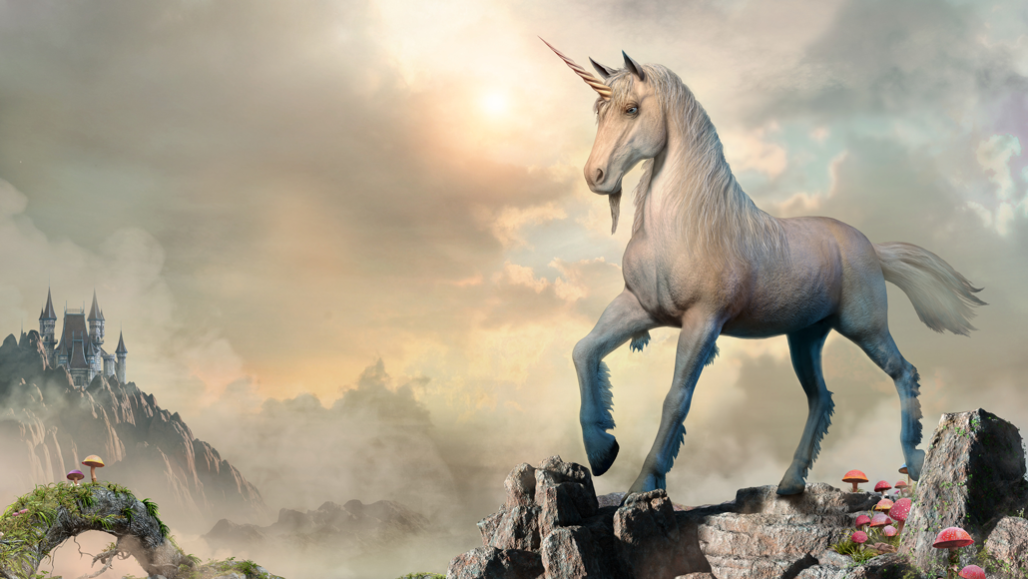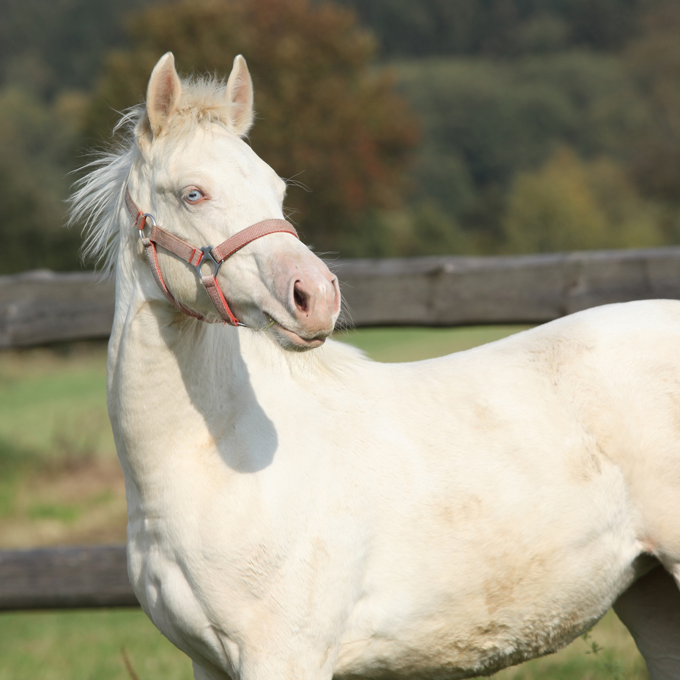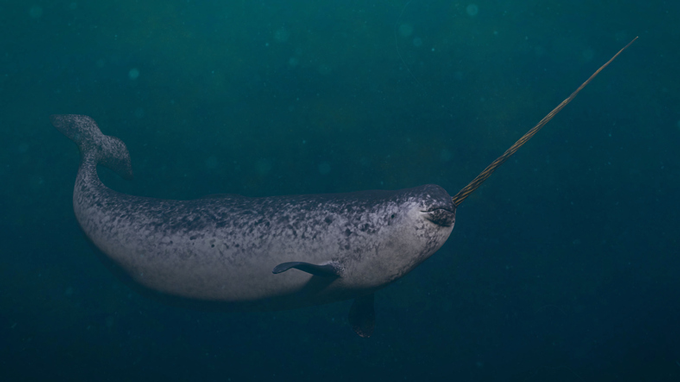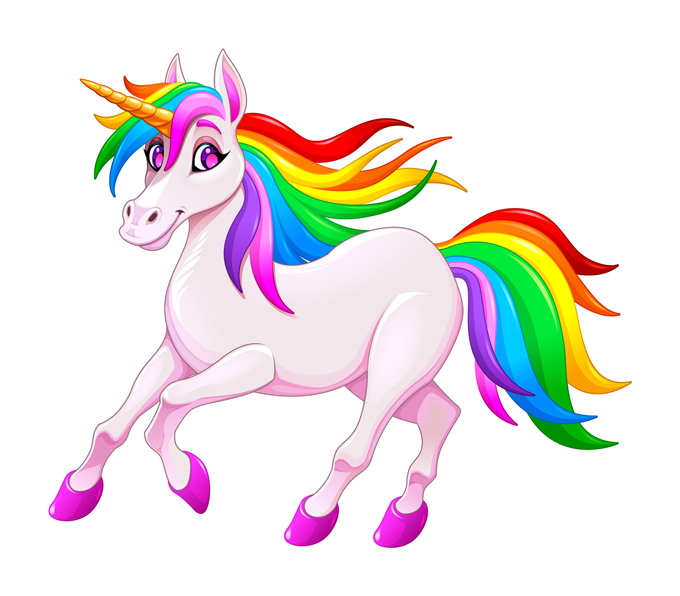What would it take to make a unicorn?
If unicorns evolved or people created them, they could be like the unruly ones in Onward

Unicorns are often depicted as white horses with heads that have sprouted a single spiraling horn. Unicorns aren’t real, of course, but scientists have some ideas about how they might become so.
Warpaintcobra/iStock/Getty Images Plus
The unicorns in the new movie Onward may look like the beauties that adorn fanciful clothing and school supplies. But don’t be fooled by their silvery white color and shimmery horns. These gussied-up ponies act like dumpster-diving raccoons while snarling at residents. They roam the streets of Mushroomton, a town populated by magical creatures.
The unicorns popular today typically aren’t garbage-eating pests. But they often have a similar look: white horses with heads that have sprouted a single spiraling horn. While everyone knows that these unicorns are just a flight of fancy, is there any chance they could ever exist?
The short answer: It’s highly unlikely. But scientists have ideas about how these animals could become real. A bigger question, though, is whether it would be a good idea to make one.
The long road to a unicorn
A unicorn doesn’t look that much different from a white horse. And getting a white horse is pretty easy. One mutation on a single gene turns an animal into an albino. These animals don’t make the pigment melanin. Albino horses have white bodies and manes and light eyes. But this mutation can also mess with other processes inside the body. In some animals, it can lead to poor vision or even blindness. So unicorns that evolved from albino horses might not be all that healthy.

A horn or rainbow coloring are more complex traits. They tend to involve more than one gene. “We can’t say ‘we are going to change this gene and now we’re going to have a horn,’” says Alisa Vershinina. She studies the DNA of ancient horses at the University of California, Santa Cruz.
If any of these traits were to evolve, they would need to give a unicorn some advantage that helps it survive or reproduce. A horn, for instance, might help a unicorn defend itself against predators. Colorful features might help a male unicorn attract a mate. That’s why many birds have bright and bold colors. “Maybe horses would be able develop these crazy colors … that would favor boys that are very beautiful pink and purple,” Vershinina says.
But none of this would happen fast because horses (and the resulting unicorns) have relatively long lifespans and reproduce slowly. Evolution “doesn’t work in a snap,” Vershinina notes.
Insects generally have short generation times, so they can evolve body parts quickly. Some beetles have horns that they use for defense. A beetle might be able to evolve such a horn in 20 years, Vershinina says. But even if it were possible for a horse to evolve into a unicorn, that “would take more than a hundred years, probably, if not a thousand,” she says.
Fast-tracking a unicorn
Perhaps instead of waiting for evolution to make a unicorn, people could engineer them. Scientists might use the tools of bioengineering to cobble together the traits of a unicorn from other creatures.
Paul Knoepfler is a biologist and stem-cell researcher at the University of California, Davis. He and his daughter Julie wrote a book, How to Build a Dragon or Die Trying. In it, they ponder how modern techniques could be used to build mythical creatures, including unicorns. To transform a horse into a unicorn, you could try adding a horn from a related animal, Paul Knoepfler says.

One approach would be to use CRISPR. This gene-editing tool lets scientists tweak an organism’s DNA. Researchers have found certain genes that are turned off or on when animals are growing their horns. So in a horse, “you might be able to … add a few different genes that would result in a horn sprouting on their head,” he says.
It would take some work to figure out which genes are the best to edit, Knoepfler notes. And then there are challenges to making the horn grow properly. Also, CRISPR itself isn’t perfect. If CRISPR creates the wrong mutation, this could give the horse an unwanted trait. Maybe “instead of the horn off the top of its head, there’s a tail growing there,” he says. A change that drastic, though, would be pretty unlikely.
A different approach would be to create an animal that contains DNA from several species. You might start with a horse embryo, Knoepfler says. As it develops, “you might be able to transplant some tissue from an antelope or some animal that naturally has a horn.” But there’s a risk that the horse’s immune system might reject the other animal’s tissue.
With all these methods, “there’s a lot of things that could go wrong,” Knoepfler notes. Still, he says, making a unicorn seems almost realistic compared with creating a dragon. And for any approach, you’d need a team of researchers, plus veterinarians and reproductive experts. Such a project would take years, he notes.
The ethics of making a unicorn
If scientists succeed in giving a horse a horn, it might not be good for the animal. Vershinina questions whether a horse’s body could support a long horn. A horn might make it harder for a horse to eat. Horses haven’t evolved to deal with a horn’s weight as some other animals have. “Rhinos have this awesome horn on their head. But they also have a massive head and they can eat with it,” she notes. “This is because this horn evolved as a part of the body.”
There are many other potential problems. Lab-grown unicorns would never have existed as part of an ecosystem. If they entered the wild, we have no clue what would happen and how they would interact with other species, Knoepfler says.

Also, huge ethical questions surround the possibility of modifying animals or creating something like a new species. The purpose for creating these unicorns would matter, argues Knoepfler. “We’d want these new creatures to have happy lives and not suffer,” he says. That might not happen if they were being bred like circus animals just to make money.
Vershinina has considered the ethics of trying to recreate creatures, such as mammoths, that don’t exist anymore. One question that would apply to unicorns and mammoths alike is how such an animal might survive in an environment to which it’s not adapted. “Are we going to be solely responsible for keeping it alive and feeding it?” she asks. Is it OK to make just one, or does a unicorn need others of its kind? And what happens if the process isn’t successful — will those creatures suffer? Ultimately, “who are we on this planet to play this role?” she asks.
And what if unicorns aren’t the sparkly, happy creatures of our fantasies? “What if we did all this work and we have these beautiful perfect unicorns with rainbow manes and these perfect horns, but they’re very grumpy?” Knoepfler asks. They could be destructive, he says. They might even turn out to pests, like the ones in Onward.
The origins of the unicorn myth
The earliest description of something like a unicorn comes from the fifth century B.C., says Adrienne Mayor. She’s a historian of ancient science. She works at Stanford University in California. The description is found in the writings of the ancient Greek historian Herodotus. He wrote about the animals of Africa.
“It’s pretty clear that [his unicorn] would have been a rhinoceros. But in ancient Greece, they would have had no idea what it actually looked like,” Mayor says. Herodotus’ description was based on hearsay, travelers’ tales and a heavy dose of folklore, she says.
The image of a horned white horse comes later, from Europe in the Middle Ages. That’s from about 500 to 1500 A.D. Back then, Europeans didn’t know about rhinos. Instead, they had this “enchanting image of a pure white unicorn,” Mayor says. In this period, unicorns were also a symbol in religion. They represented purity.
At that time, people believed unicorn horns had magical and medicinal qualities, Mayor notes. Shops that sold medicinal compounds would sell unicorn horns. Those “unicorn horns” were actually narwhal tusks collected at sea.







